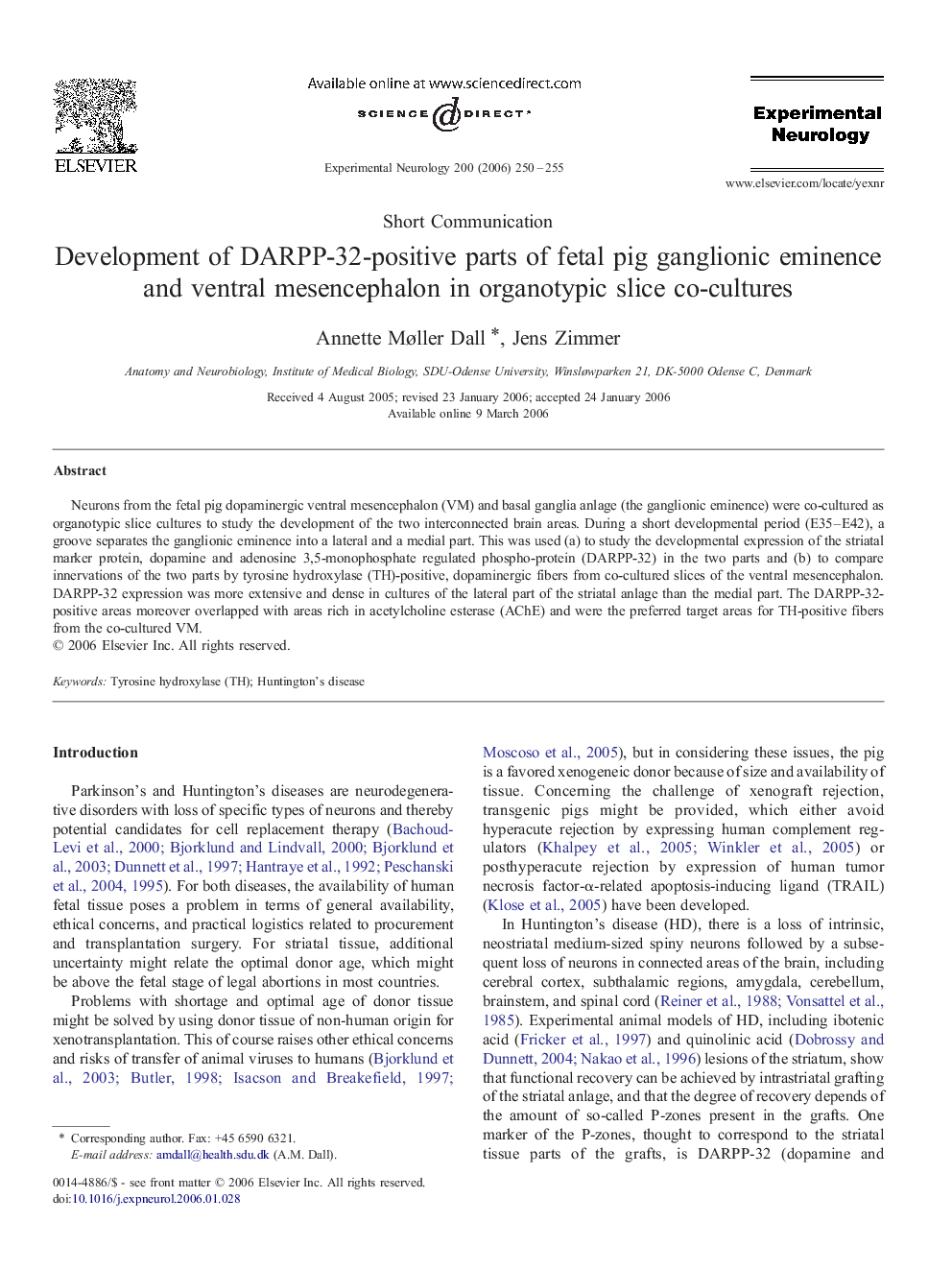| Article ID | Journal | Published Year | Pages | File Type |
|---|---|---|---|---|
| 3057408 | Experimental Neurology | 2006 | 6 Pages |
Neurons from the fetal pig dopaminergic ventral mesencephalon (VM) and basal ganglia anlage (the ganglionic eminence) were co-cultured as organotypic slice cultures to study the development of the two interconnected brain areas. During a short developmental period (E35–E42), a groove separates the ganglionic eminence into a lateral and a medial part. This was used (a) to study the developmental expression of the striatal marker protein, dopamine and adenosine 3,5-monophosphate regulated phospho-protein (DARPP-32) in the two parts and (b) to compare innervations of the two parts by tyrosine hydroxylase (TH)-positive, dopaminergic fibers from co-cultured slices of the ventral mesencephalon. DARPP-32 expression was more extensive and dense in cultures of the lateral part of the striatal anlage than the medial part. The DARPP-32-positive areas moreover overlapped with areas rich in acetylcholine esterase (AChE) and were the preferred target areas for TH-positive fibers from the co-cultured VM.
